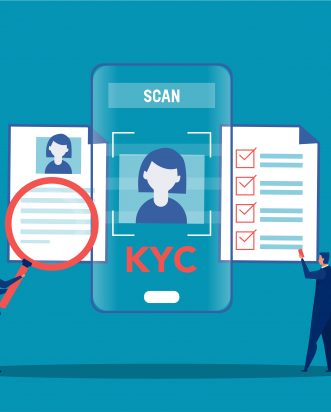We recently broke down the Fraud section of the FinCEN “National AML/CFT Priorities and Accompanying Statements” (Priorities). This week we will do a deep dive on a section of the Priorities that might be new to some readers – the Proliferation Financing section. Like we did with the Fraud section, we will discuss what is being suggested in the Priorities, and how AML professionals can start to plan their strategy.
Proliferation Financing defined
First, what is Proliferation Financing? The Financial Action Task Force (FATF) defines Proliferation financing as “the provision of funds or financial services used for the manufacture, acquisition, possession, development, export, trans-shipment, brokering, transport, transfer, stockpiling or use of nuclear, chemical or biological weapons and their means of delivery and related materials (including both technologies and dual-use goods used for non-legitimate purposes), in contravention of national laws or, where applicable, international obligations.”
We heard from FinCEN on Proliferation Financing as early as 2007 with this guidance: https://www.fincen.gov/resources/statutes-regulations/guidance/guidance-financial-institutions-increasing-money-laundering
The above guidance sent us to the Treasury’s sanctions site with respect to Iran.
FinCEN then issued this recent guidance: https://www.fincen.gov/news/news-releases/financial-action-task-force-identifies-jurisdictions-anti-money-laundering-and
This notice reminds us that FATF considers a jurisdiction’s counter-proliferation activity in assessing the risk of money laundering\, terrorist financing or proliferation financing. In June 2021 a number of countries were added to FATF’s list of “Jurisdictions under Increased Monitoring,” and Ghana was removed from that list. Added were: Haiti, Malta, the Philippines, and South Sudan. FinCEN also reminded U.S. banks about a concept called “blanket de-risking” wherein institutions use guidance as the basis to engage in wholesale or indiscriminate de-risking of any class of customers or financial institutions.
Proliferation Financing example
For those who are new to the concept of Proliferation Financing, we’ll use an example that is both fictitious and facetious. Imagine a crate of small nuclear warheads at a U.S. shipyard disguised somehow as a crate of toasters, for example, and being shipped to bad actors by XYZ Export, LLC. Through a number of intermediary companies, the warheads are destined for Iran. An import/export company is being used, and there’s some finagling of the invoice going on, which in AML terms is called trade finance fraud. Of course, XYZ Export, LLC gets paid for their ‘toasters’ with a variety of electronic payments that hopscotch the world through a series of shell companies in sketchy geographies. In other words, it’s the middlemen that are allowing this transaction to happen. It’s unlikely that nuclear warheads are being disguised as toasters, but it’s more likely that the ingredients for nuclear weapons are being moved in much the same manner as described above. The Priorities are reminding AML professionals of this, to encourage them to add this to their AML and Sanctions Programs and risk assessments.
Counter-Measures:
The belief is that the best way to interrupt Proliferation is to interrupt the flow of funds to the bad actors. What’s key here is that counter-measures are about two things: 1) The flow (think AML); and the bad actors (think KYC and Sanctions). That makes sense. So, Proliferation Financing is a specialty that brings together both AML/KYC and Sanctions under one topic.
With respect to AML/KYC, the AML professional should consider what Enhanced Due Diligence is in place for import/export companies or companies that don’t identify as such, but exhibit activity consistent with import/export. It’s likely that customers won’t open a business checking account and self-identify as exporting nuclear materials – it’s up to AML professionals to identify that activity.
With respect to Sanctions, the Proliferation Financing section in the Priorities discusses sanctions multiple times and reminds institutions to be aware of economic and trade sanctions issued by the federal government. Examples of sanctions programs include those under OFAC, the Department of Commerce’s Bureau of Industry and Security, and the Department of State’s Bureau of International Security and Nonproliferation. Yes, ferreting out the bad actors is key to ferreting out the flow of bad funds. Note, too, that the Priorities help the reader understand that the bad actors include intermediaries, gatekeepers, and trade brokers who move goods and funds through front companies and shell companies, either intentionally or inadvertently.
Possible Strategies:
For many small community banks in the U.S., Proliferation Financing might be a new topic to ponder. For them, success may come in the form of a solid training program for the BSA department staff and first line staff regarding what this is along with added language to KYC, monitoring, and sanctions procedures. Smaller community banks aren’t immune to Proliferation Financing activity. Bad actors might intentionally seek out a smaller institution, in the hopes that KYC and monitoring wouldn’t be as robust. Counter to that, there is the point that smaller community banks might not offer the services these bad actors require to commit their laundering.
For regional institutions (and larger) and especially those along major trade routes (think port cities and those along major interstate junctions) Proliferation Financing is probably still a newer concept, but at least represented in procedure. These larger banks are more likely to be involved in international correspondent banking, which is identified as a factor in Proliferation Financing risk in the U.S. as it facilitates cross-border trade. Focus on procedures regarding foreign companies, referral sources for foreign companies, and perhaps onboard an analyst specific to sanctions programs (beyond OFAC.)
For all institutions, however, Proliferation Financing remains an abstract topic. Unlike traditional money laundering, there isn’t an alert-type in most AML systems that monitors for Proliferation Financing, but AML professionals can look for layering and funneling as well as front-company activity. Also, as mentioned above, focus on EDD on customers and referral sources. The goal is to identify the bad actors, meaning those who are directly involved, as well as the intermediaries.
The Priorities suggest additional reading for those new to Proliferation Financing.



